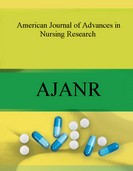Abstract
Title
DEMOGRAPHIC CHARACTERISTICS AMONG PATIENTS WITH
ANTI-TUBERCULOSIS DRUG INDUCED PERIPHERAL
NEUROPATHY
Author
Dr. Tejeshwari B V, Dr. Bhuvaneswari G, Dr. Parasuramalu B.G, Vijayaraghavan R
Email
Tejeshwari@gmail.com
keyword
Demographic
characteristics, drug
induced, Tuberculosis
patients, peripheral
neuropathy
Abstract
In India, Tuberculosis has been mentioned in the Vedas and the old Ayurvedic
scriptures. Historically speaking, fight against Tuberculosis in India can be broadly
classified into three periods: early period, before the discoveries of x-ray and chemotherapy;
post-independence period, during which nationwide Tuberculosis control programs were
initiated and implemented; and the current period, during which the ongoing WHO-assisted
Tuberculosis control program is in place. Tuberculosis incidence is seasonal, with peaks
occurring every spring and summer. The reasons for this are unclear, but may be related to
vitamin D deficiency during the winter. There are also studies linking tuberculosis to
different weather conditions like low temperature, low humidity and low rainfall. It has
been suggested that tuberculosis incidence rates may be connected to climate change. Those
at high risk thus include: people who inject illicit drugs, inhabitants and employees of
locales where vulnerable people gather (e.g., prisons and homeless shelters), medically
underprivileged and resource-poor communities, high-risk ethnic minorities, children in
close contact with high-risk category patients, and health-care providers serving these
patients. Factors contributing to this include higher prevalence of predisposing health
conditions and behaviours, and overcrowding and poverty. In some Canadian aboriginal
groups, genetic susceptibility may play a role. Methods: Quasi-experimental design (one
group pre-test post-test design) was recruited by non-probability purposive sampling
technique used for the present study. Necessary administrative permission was obtained
from the concerned authority. The Structured interview schedule was used to elicit the
baseline data. Result: The study revealed that among 180 Tuberculosis patients, age, gender,
marital status, family type, occupation and history of hospitalization was not significantly
associated, where as education found statistically significant at 0.05 levels. It is observed
that the majority of the respondents 46.7% were in the age group of 35-44 years, whereas
38.3% of the respondents in the age group of 45-54years. In relation to age, 52.2% of the
respondents were male and 47.8% were females. It is observed that 100% of respondents
were from joint families, it is noticed that majority 96.7% of the respondent had schooling,
3.3% had above schooling, It is noticed that majority 76.7% of the respondents were farmer,
20.5% were labor/daily wage, 2.8% had business. It is noticed that majority 28.3% of the respondents had history of hospitalization and 71.7% had no history of hospitalization.
Conclusion:-The study concluded that the foot reflexology of anti-tuberculosis drug-induced
peripheral neuropathy among Tuberculosis patients from selected community area,
Ramanagara Taluk & District, Karnataka carried out the study was found to be effective in
decreasing the fatigue levels among peripheral neuropathy in person with Tuberculosis
patients as evidenced by the significant change between pre-test and post-test scores













